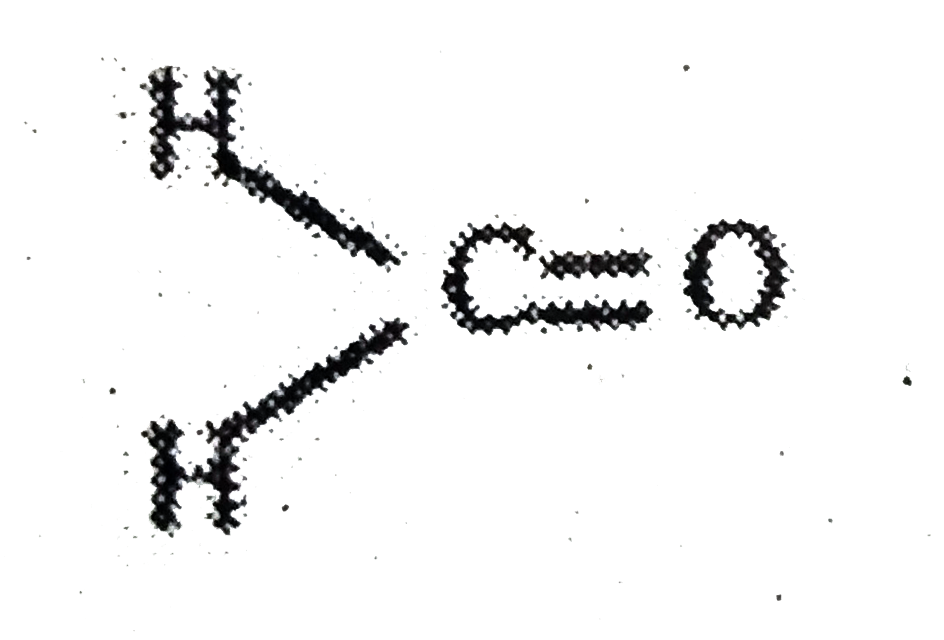The Cannizzaro's of formaldehyde involves
intramolecular shift of proton
intramolecular shift of hydride ion
intermolecular shift of proton
intermolecular shift of hydride ion.
The correct Answer is:D
To solve the question regarding the Cannizzaro reaction of formaldehyde, we will break down the process step by step.
1. Understanding the Cannizzaro Reaction:
The Cannizzaro reaction is a redox reaction that occurs in aldehydes lacking alpha-hydrogens, such as formaldehyde (HCHO). In this reaction, two molecules of formaldehyde react in the presence of a strong base (like NaOH) to produce an alcohol and a carboxylate salt.
2. Setting Up the Reaction:
The reaction can be represented as:
2HCHO+NaOH→HCOONa+CH3OH
Here, one molecule of formaldehyde is oxidized to form sodium formate (HCOONa), while the other is reduced to form methanol (CH3OH).
3. Mechanism of the Reaction:
- Step 1: The hydroxide ion (OH⁻) from NaOH attacks the carbonyl carbon of formaldehyde, leading to the formation of a tetrahedral alkoxide intermediate.
- Step 2: This alkoxide ion acts as a hydride donor to another molecule of formaldehyde. The hydride ion (H⁻) is transferred from the alkoxide to the carbonyl carbon of the second formaldehyde molecule.
- Step 3: As a result of this hydride transfer, one molecule of formaldehyde is reduced to methanol, while the other is oxidized to formate ion (HCOO⁻).
4. Identifying the Type of Shift:
The transfer of the hydride ion occurs between two different molecules (intermolecular transfer), rather than within a single molecule (intramolecular transfer).
5. Final Products:
The final products of the Cannizzaro reaction of formaldehyde are sodium formate (HCOONa) and methanol (CH3OH).
Conclusion:
The Cannizzaro reaction of formaldehyde involves the intermolecular transfer of a hydride ion, resulting in the formation of sodium formate and methanol.
The Cannizzaro reaction is a redox reaction that occurs in aldehydes lacking alpha-hydrogens, such as formaldehyde (HCHO). In this reaction, two molecules of formaldehyde react in the presence of a strong base (like NaOH) to produce an alcohol and a carboxylate salt.
The reaction can be represented as:
2HCHO+NaOH→HCOONa+CH3OH
Here, one molecule of formaldehyde is oxidized to form sodium formate (HCOONa), while the other is reduced to form methanol (CH3OH).
- Step 1: The hydroxide ion (OH⁻) from NaOH attacks the carbonyl carbon of formaldehyde, leading to the formation of a tetrahedral alkoxide intermediate.
- Step 2: This alkoxide ion acts as a hydride donor to another molecule of formaldehyde. The hydride ion (H⁻) is transferred from the alkoxide to the carbonyl carbon of the second formaldehyde molecule.
- Step 3: As a result of this hydride transfer, one molecule of formaldehyde is reduced to methanol, while the other is oxidized to formate ion (HCOO⁻).
The transfer of the hydride ion occurs between two different molecules (intermolecular transfer), rather than within a single molecule (intramolecular transfer).
The final products of the Cannizzaro reaction of formaldehyde are sodium formate (HCOONa) and methanol (CH3OH).
The Cannizzaro reaction of formaldehyde involves the intermolecular transfer of a hydride ion, resulting in the formation of sodium formate and methanol.
Similar Questions
Knowledge Check
- Question 1 - Select One or More
Mixture of Ph−O∣∣C−H and HCHO is treated with NaOH then Cannizzaro reaction involves
Areduction of HCHOBoxidation of HCHOCreduction of PhCHODoxidation of PhCHO
Cannizzaro's reaction
View SolutionIUPAC name of formaldehyde is
View SolutionFormaldehyde to urotropine
View SolutionHow will you account for the following:
Formaldehyde gives Cannizzaro's reaction but acetaldehyde does not.View SolutionHow will you account for the following:
Formaldehyde gives Cannizzaro's reaction but acetaldehyde does not.View SolutionThe Cannizzaro's reaction is not give by:
View SolutionAssertion:In formaldehyde, all the four atoms are in the same plane

Reason:The carbon atom in formaldehyde is sp3 hybridizedView Solution

